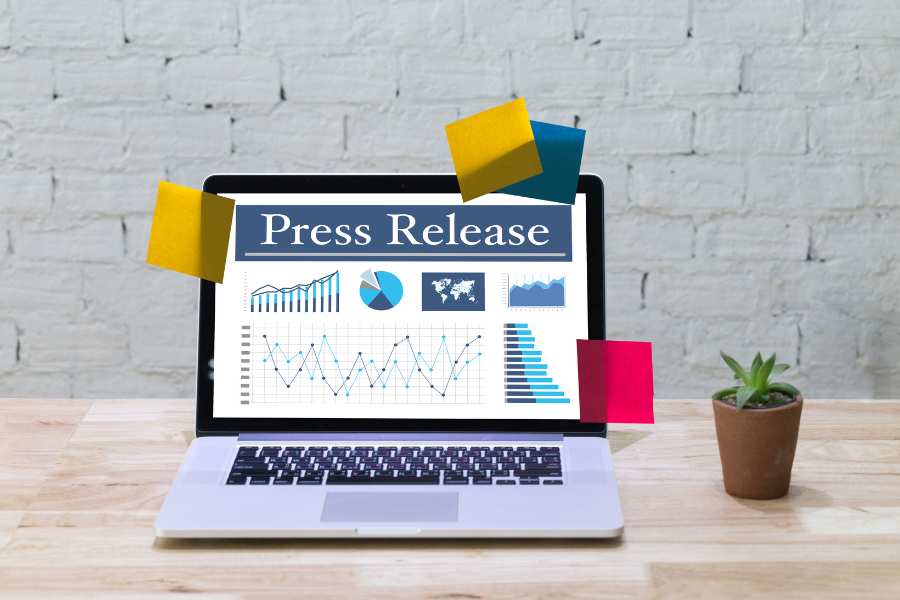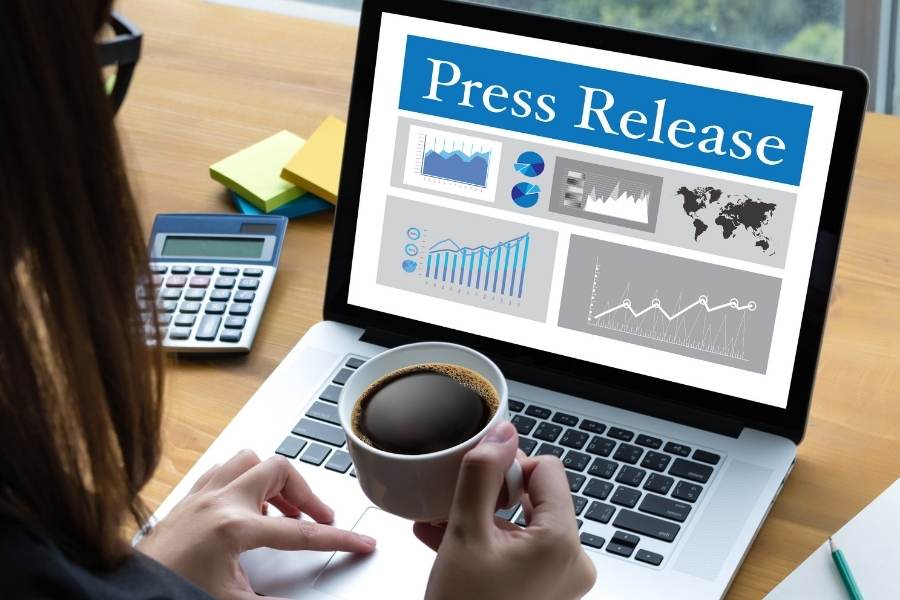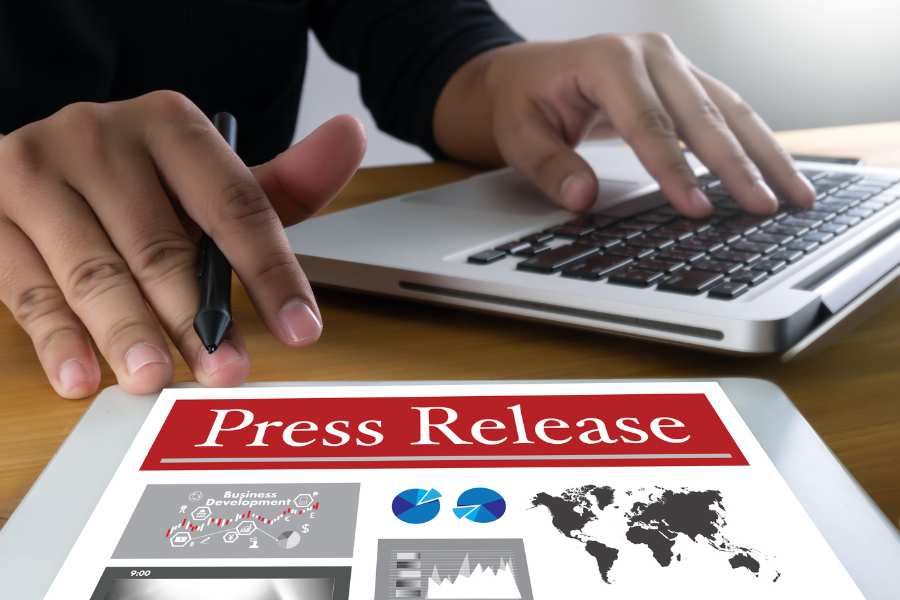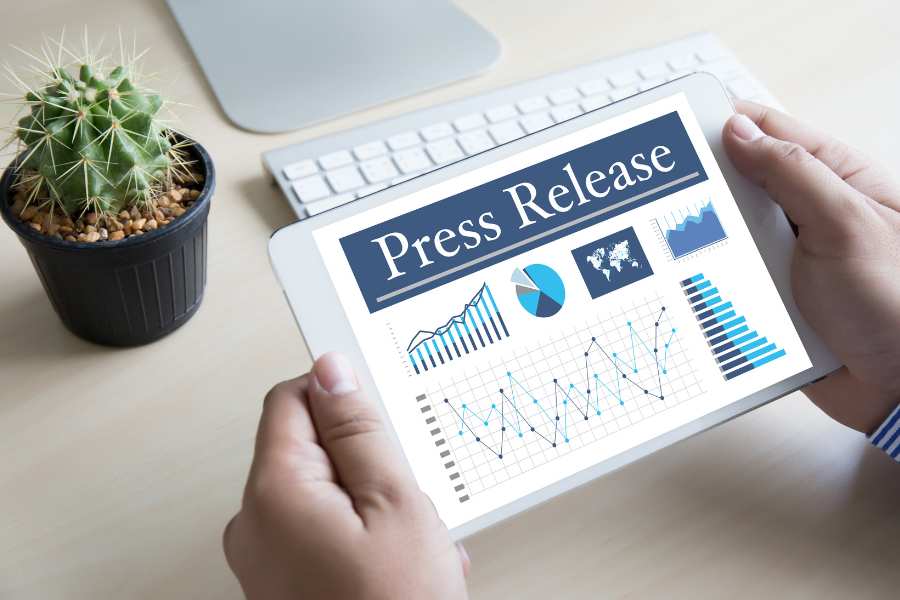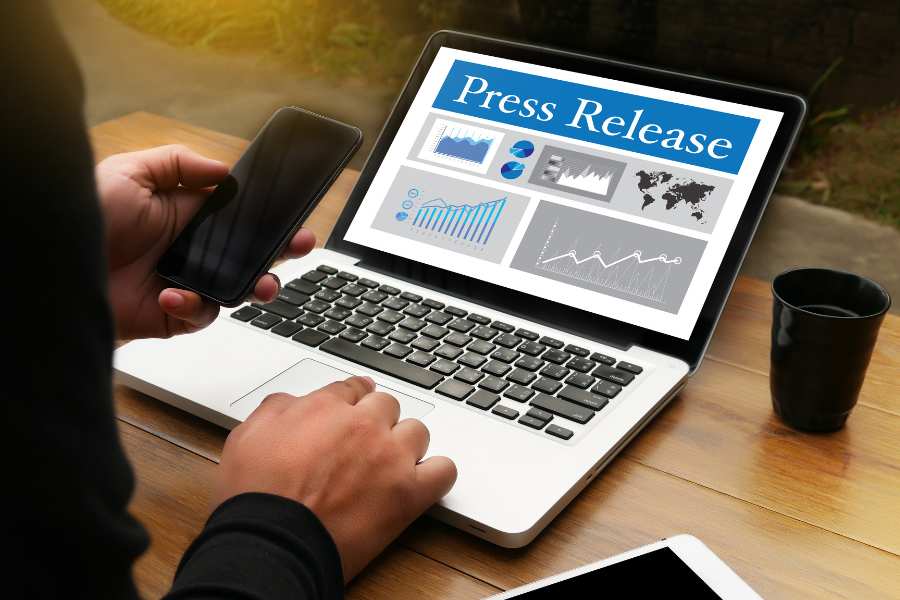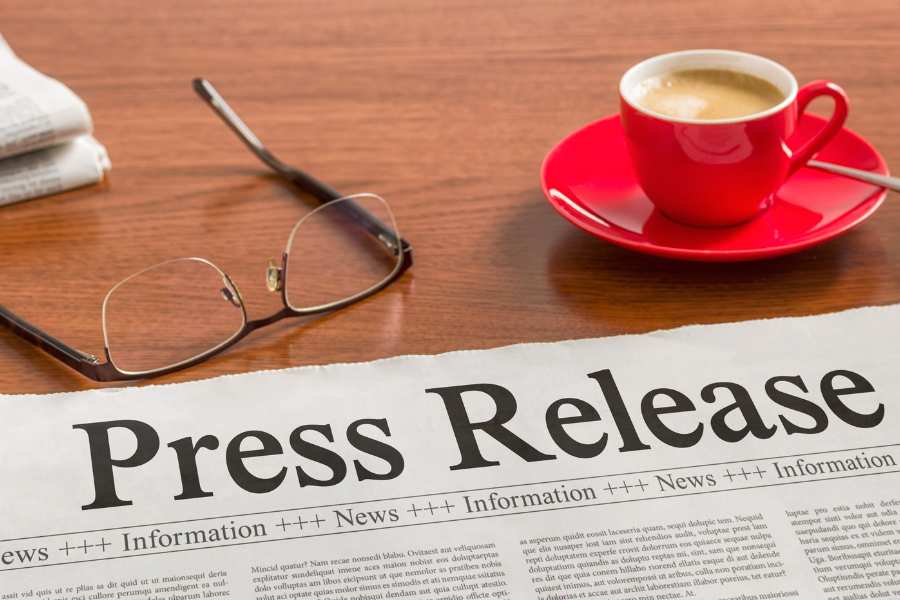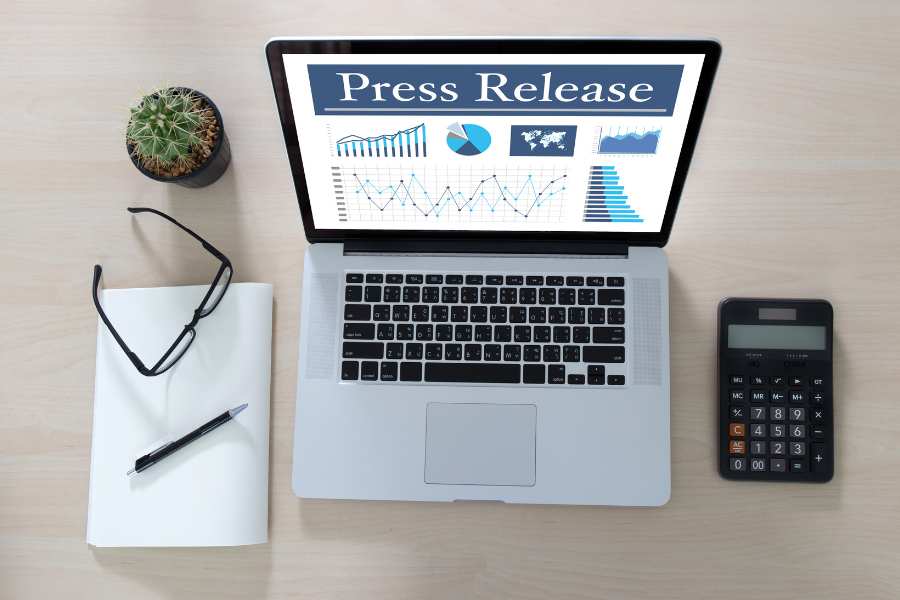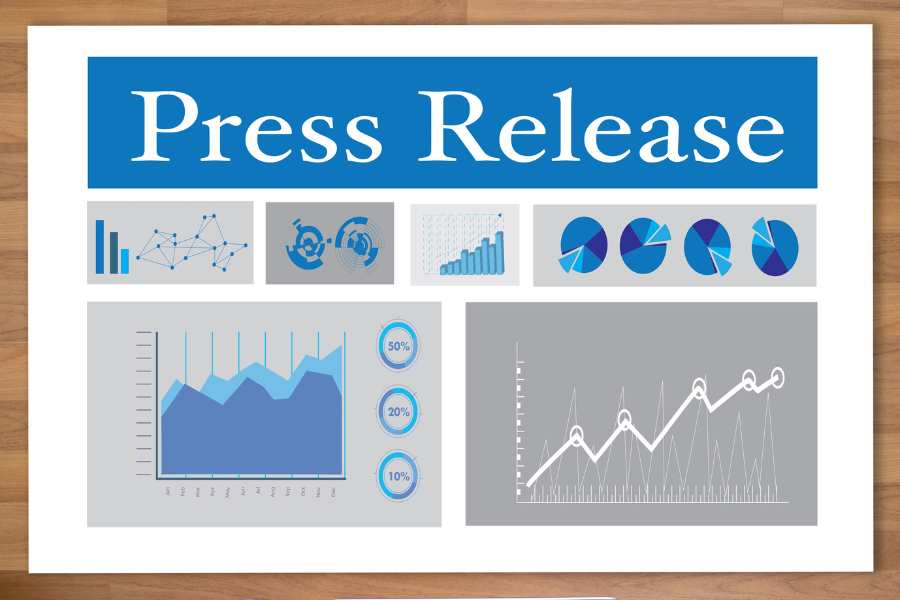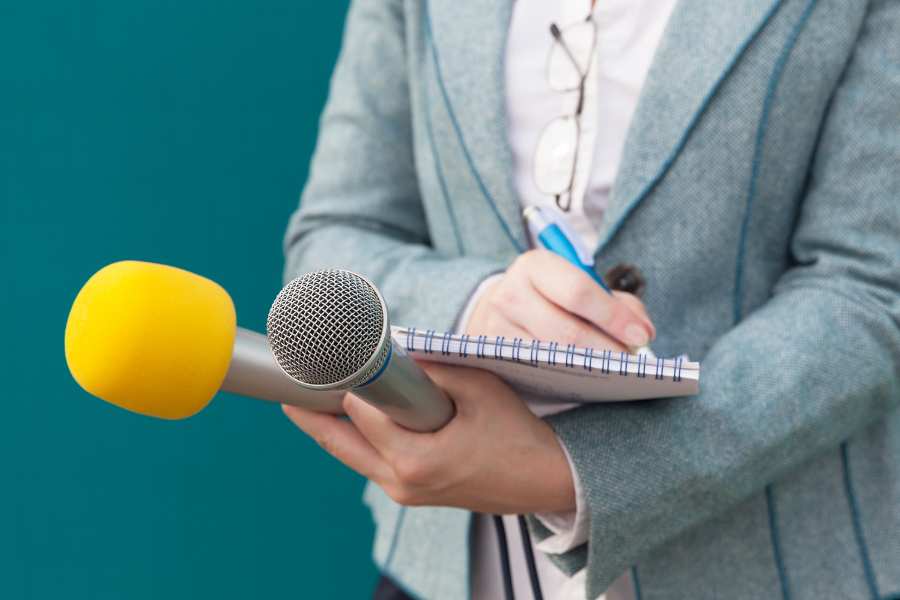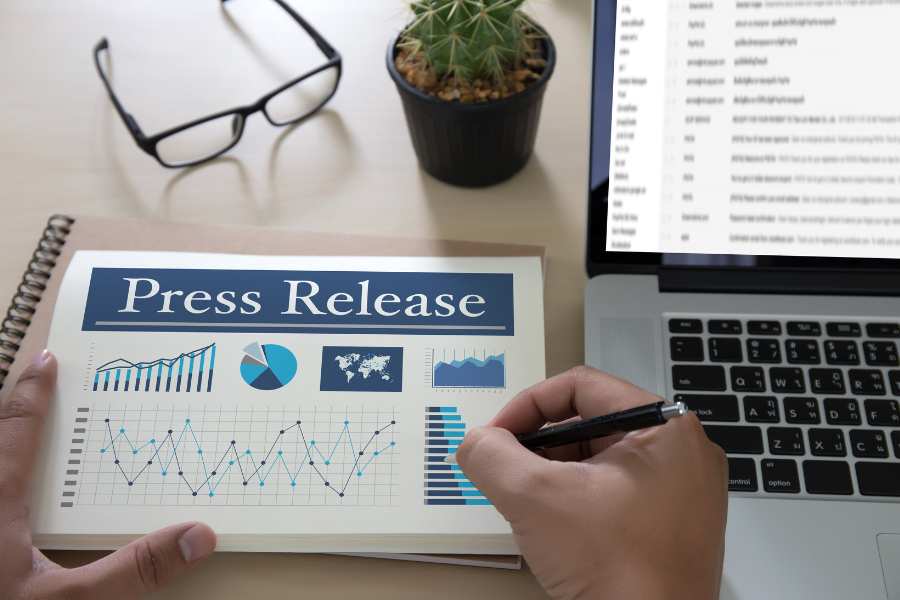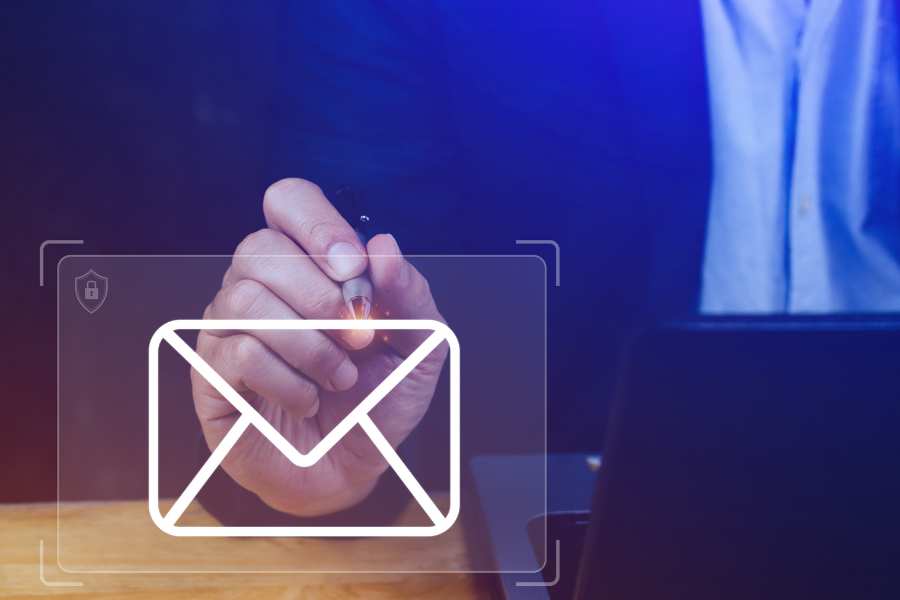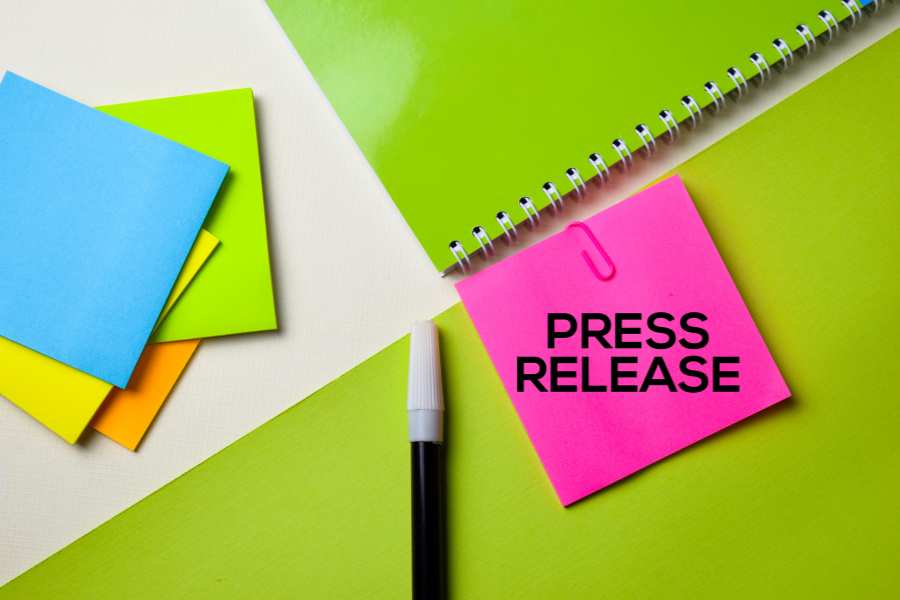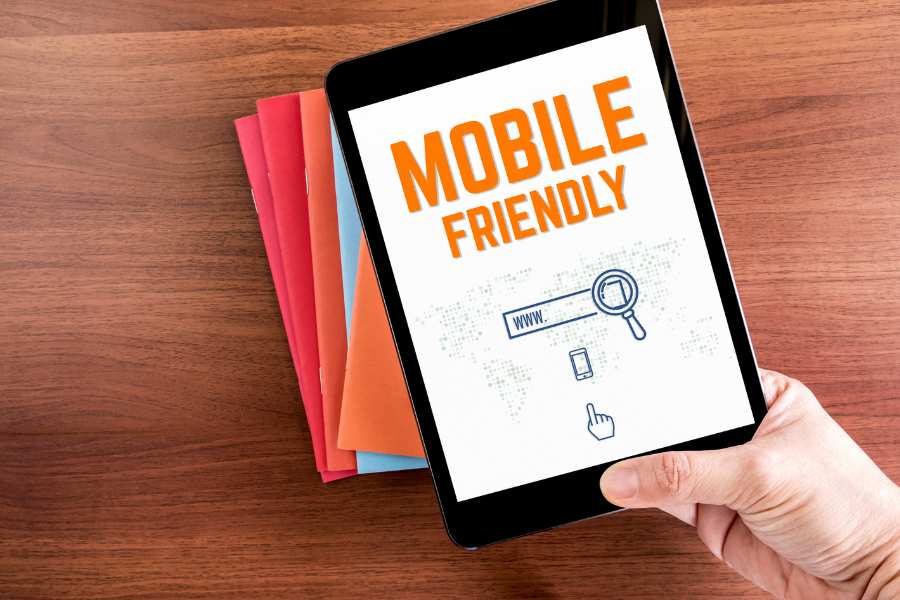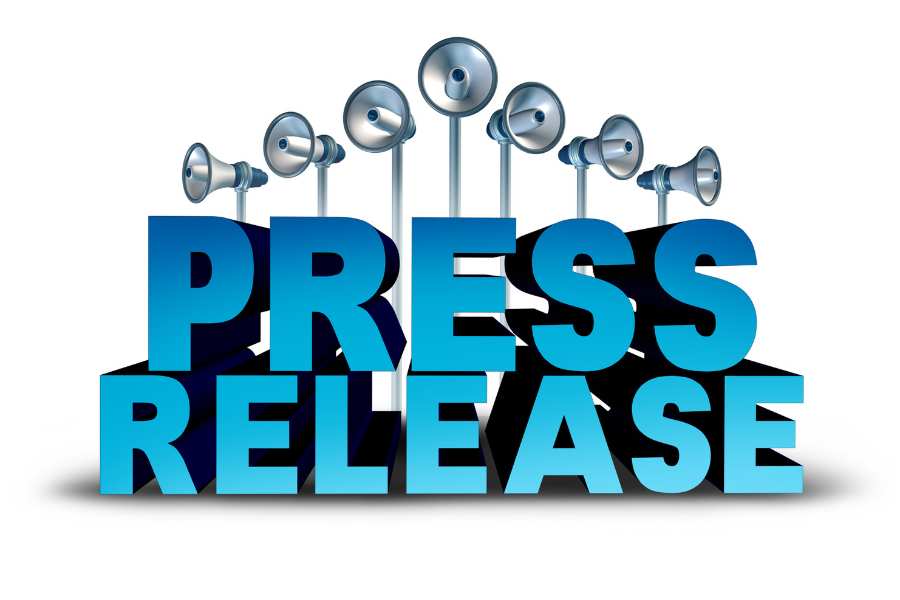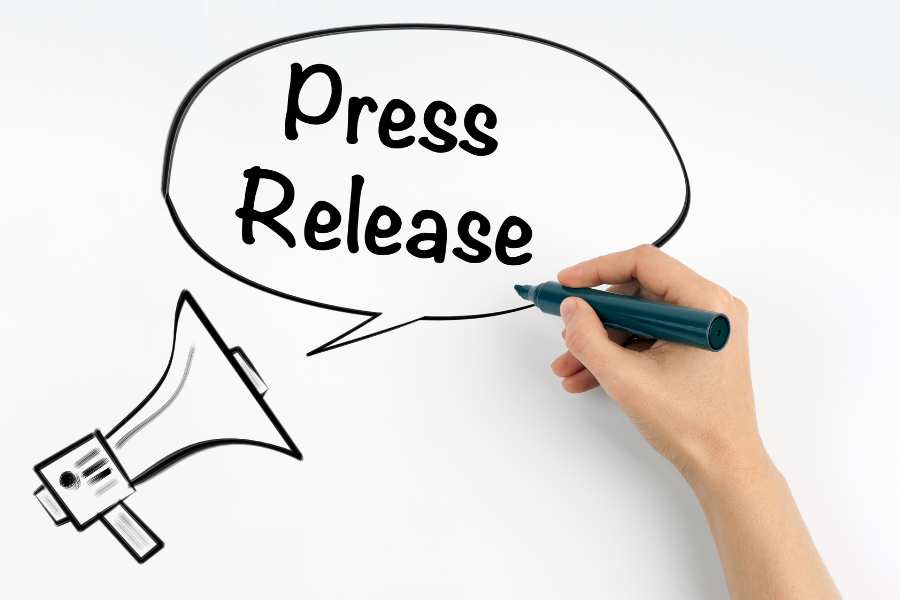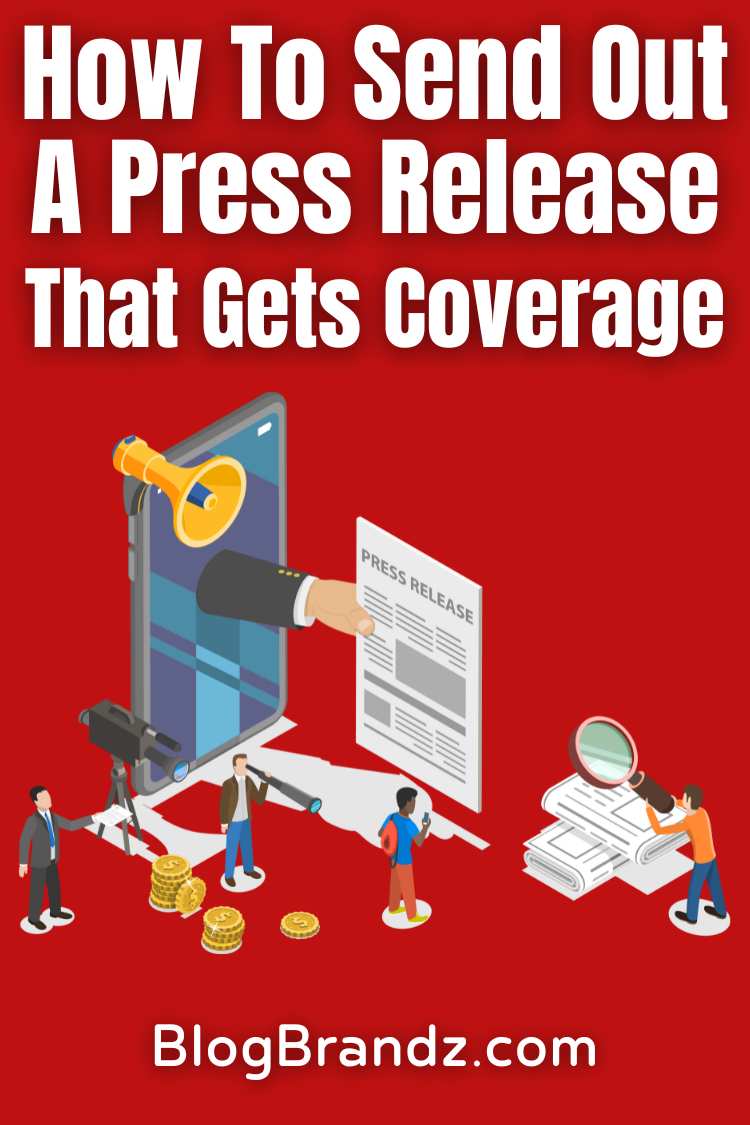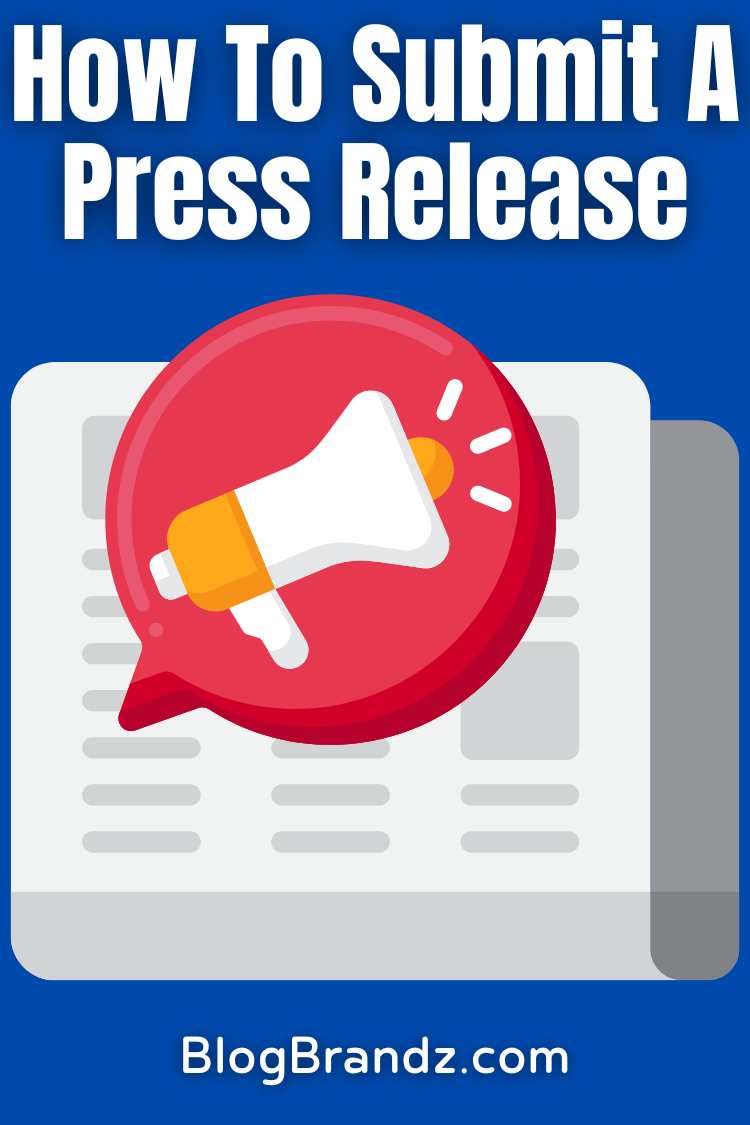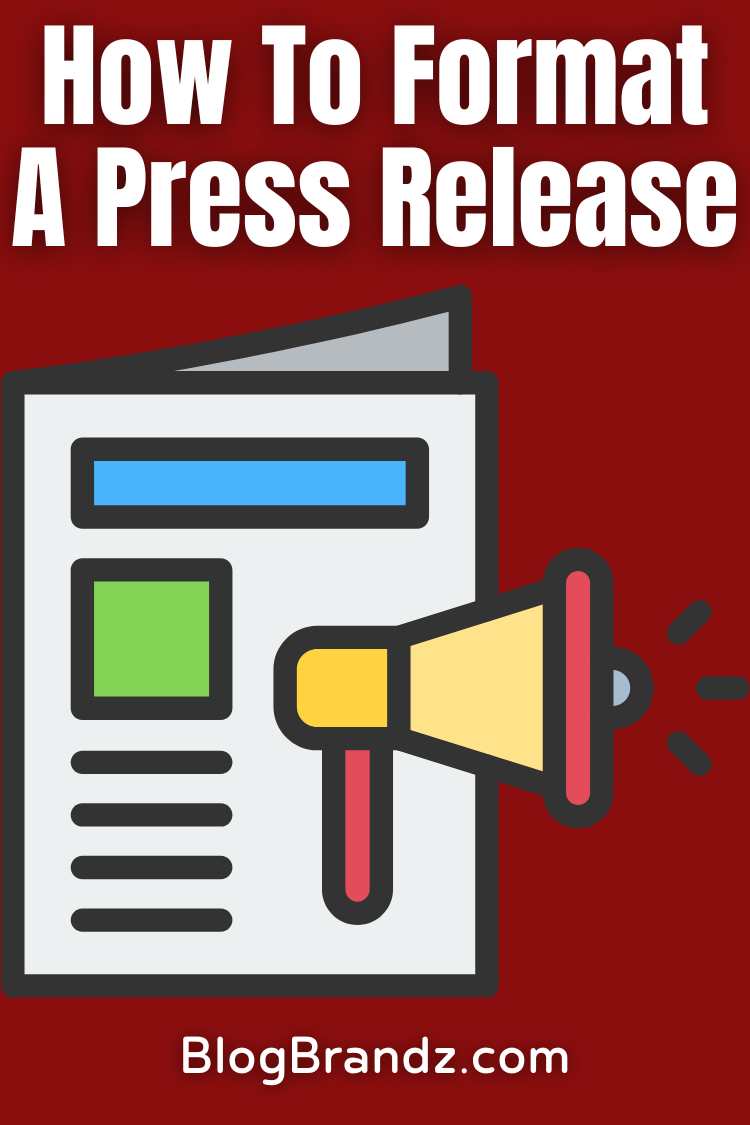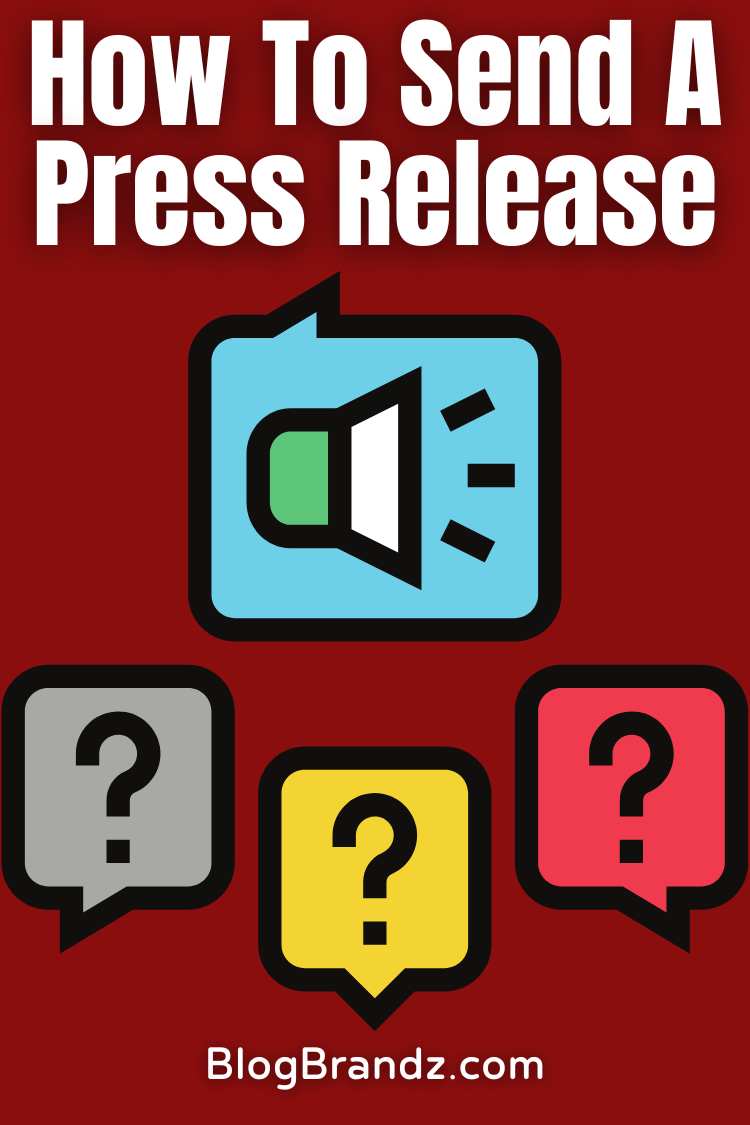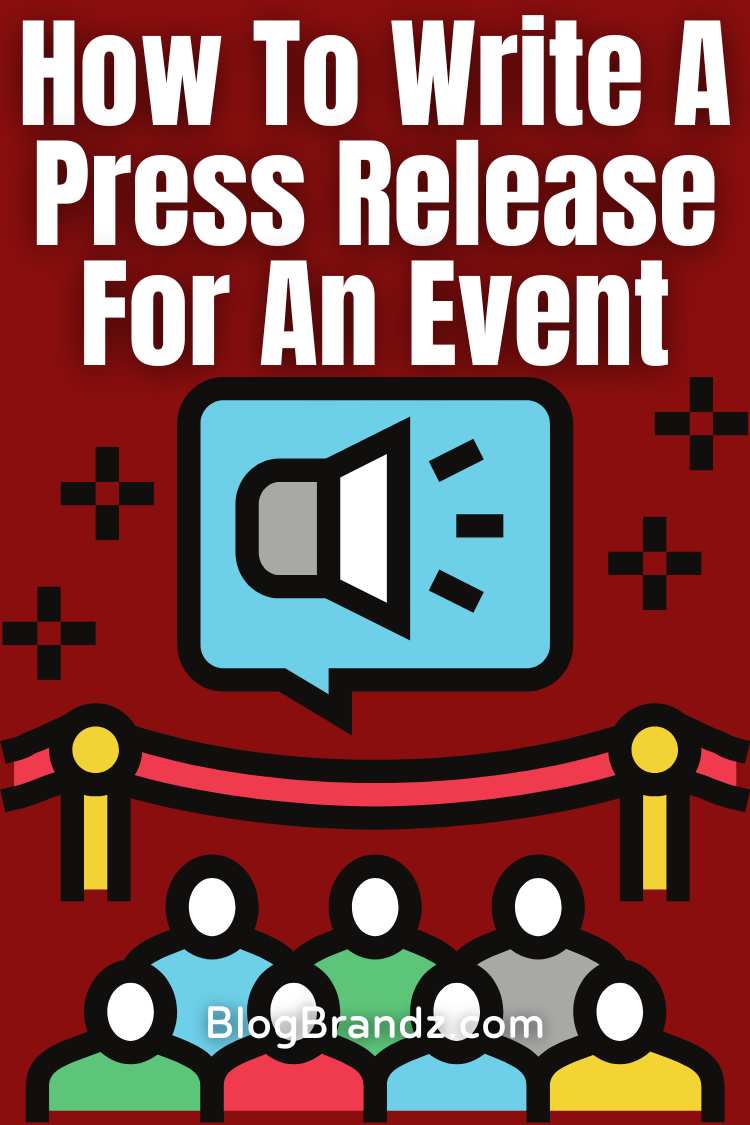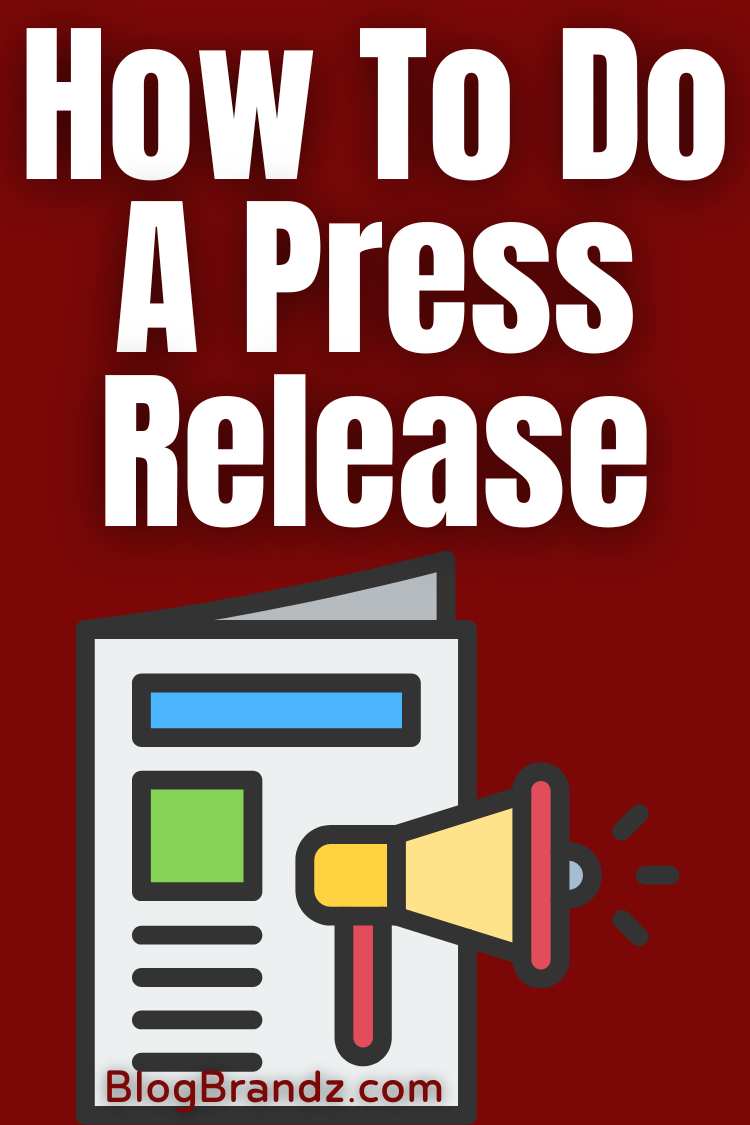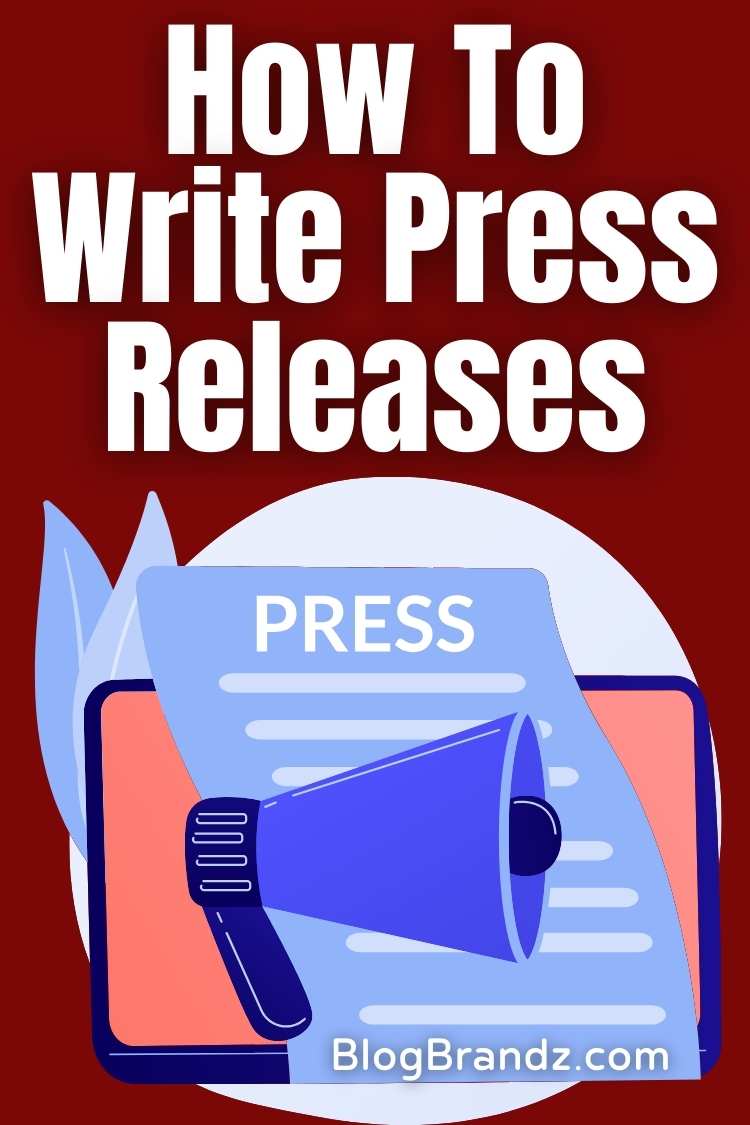Learn how to write a press release that grabs attention and gets noticed. Discover essential tips and best practices for crafting compelling press releases.
A press release, by definition, is a written communication that announces newsworthy information about a company, organization, or individual to the media. It is typically sent to journalists, editors, and other media outlets to generate publicity and coverage for the announcement.
Press releases have been a staple of public relations and media outreach, and continue to be an important tool for organizations looking to share news and information with the media and the public.
They date back to the early 20th century when Ivy Lee, a public relations pioneer, issued the first official press release in 1906 after a train accident involving one of his clients, the Pennsylvania Railroad.
While press releases were traditionally distributed to media outlets via mail or fax, the digital age has transformed the way press releases are distributed.
Today, press releases are often distributed online through press release distribution services and posted on company websites and social media channels.
In this article, you’ll learn how to write a press release that grabs the attention of the media and helps you share your news effectively.
Contents
- What Is a Press Release?
- What Are The Benefits of Press Releases?
- Press Release Writing Tips
- What is a Boilerplate in a Press Release?
- How To Send Out a Press Release
- Do Press Releases Still Offer SEO Benefits?
- Press Release SEO Tips
- How To Format a Press Release
- Sample Press Release Template
- PR & Press Release Writing Tips
What Is a Press Release?
A press release is a powerful tool used by companies, organizations, and individuals to communicate newsworthy information to the media.
It’s essentially a written announcement that aims to attract the attention of journalists and editors, encouraging them to cover the story and share it with their audience.
Press releases have evolved to adapt to digital trends, such as the rise of social media and the increasing importance of online visibility. Companies now use press releases as part of a larger digital marketing strategy to reach their target audience.
What Are The Benefits of Press Releases?
Writing a press release can be a powerful way to share news about your organization with the media.
A well-written press release can help you get your message out to a wider audience, increase your credibility, and generate media coverage that can benefit your organization.
Here are some facts that highlight the enduring relevance and adaptability of press releases and demonstrate why they are so important in the ever-changing media landscape:
Media Coverage:
A well-crafted press release can lead to media coverage in newspapers, magazines, websites, blogs, TV, and radio. This coverage can significantly increase the reach and visibility of your message.
Credibility Boost:
Press releases published by reputable media outlets can enhance a company’s credibility and reputation. Being featured in the news can help build trust with customers and stakeholders.
SEO Benefits:
Press releases can have SEO benefits for businesses. Press release websites can generate backlinks to the company’s website, which can improve search engine rankings.
Social Media Amplification:
Press releases can be shared on social media platforms to further amplify their reach. Companies can use social media to share their press releases with their followers and encourage them to share the news with their networks.
Global Reach:
Press releases have the potential to reach a global audience. With the internet and online distribution services, a press release can be seen by journalists, bloggers, and the public around the world.
Measurable Impact:
With online press release distribution services, companies can track the impact of their press releases by monitoring metrics such as views, shares, and engagement.
Announcing News:
Press releases are ideal for announcing new products, services, partnerships, awards, events, or any other significant developments within your organization.
Building Relationships:
Sending out press releases regularly can help you build relationships with journalists and media outlets, making it more likely that they’ll cover your future stories.
Cost-Effective:
Compared to paid advertising, press releases are a cost-effective way to get your message out to a wide audience.
Multimedia Integration:
Press releases are no longer limited to text. Many press releases now include multimedia elements such as photos, videos, and infographics to make them more engaging and shareable.
Regulatory Compliance:
Publicly traded companies often use press releases to comply with regulatory requirements, such as disclosing financial results or material information that could impact their stock price.
Press Release Writing Tips
Writing a press release that gets coverage requires careful planning and execution. Here are some press release writing tips to help you craft a press release that grabs the attention of journalists:
#1. Focus on Newsworthiness
When focusing on newsworthiness, consider the impact and relevance of your press release to your target audience. For example, if you’re trying to figure out how to write a press release for an event, start by crafting a concise, compelling story that highlights the key details and benefits of the event.
Highlight your event’s Unique Selling Point (USP) by explaining what sets your event apart, why it’s worth attending, and the benefits and value attendees will gain. The goal is to provide enough information to generate interest and encourage journalists to cover your event.
Sharing important company news such as a merger, acquisition, or significant milestone can also capture the attention of journalists and readers.
Additionally, offering expert insights or commentary on a current issue or trend can position your company as a thought leader in your industry, making your press release more compelling and likely to be picked up by media outlets.
#2. Follow the Inverted Pyramid Structure
When writing a press release, it’s important to follow the “inverted pyramid structure.” This involves placing the most critical information at the top, followed by supporting details and background information.
It ensures that journalists receive the key points immediately, increasing the chances of your story being picked up and covered.
For example, if you’re announcing a new product, start with the product name, its unique selling points, and why it’s significant. Then, provide additional details such as pricing, availability, and how it differs from competitors.
Finally, include background information about your company (also called a press release boilerplate), quotes from key executives, and any relevant statistics or data to support your announcement.
In an event press release, you should include details such as the date, time, location, and purpose of the event, and mention any notable speakers, performers, or activities.
By formatting your press release in this way, you make it easier for journalists to quickly grasp the importance of your news and decide whether to cover it, ultimately increasing the likelihood of your story being picked up and reaching a wider audience.
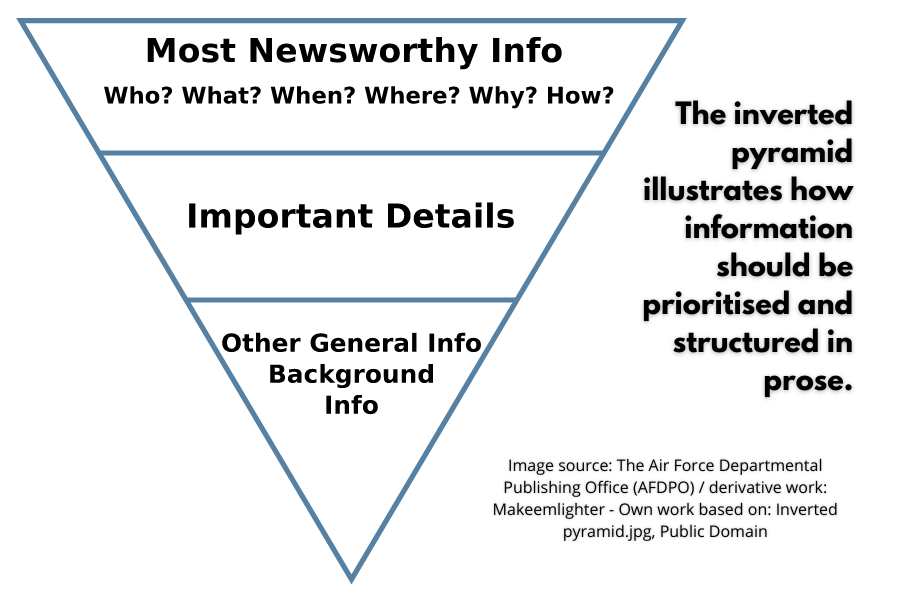
#3. Start with a Strong Headline
A strong headline is crucial for grabbing the attention of journalists and readers. It should be clear, concise, and compelling, summarizing the main point of your press release in a way that entices people to read further.
For example, if you’re announcing a new product, your headline could be something like “Introducing XYZ: The Revolutionary Solution for [Problem].” This headline is specific, highlights the key benefits of the product, and creates curiosity about what the solution entails.
Remember, your headline is often the first thing people will see, so make sure it effectively communicates the essence of your press release and entices readers to learn more.
#4. Write a Compelling Lead
The lead paragraph of your press release (also called the lede in journalistic parlance) is crucial for grabbing the reader’s attention and summarizing the key points of your announcement.
It should answer the who, what, when, where, why, and how questions, providing a concise and compelling overview of your story. For example, if you’re announcing a new store opening, your lead paragraph could be something like:
“XYZ Company is thrilled to announce the grand opening of its newest retail store in downtown [City]. The store, located at [Address], will open its doors to the public on [Date], offering customers a unique shopping experience with a wide range of products and exclusive deals.”
This lead paragraph provides essential information about the announcement, including the company name, the opening location, the date, and what customers can expect. It entices readers to continue reading to learn more about the store and its offerings.
#5. Use Clear and Concise Language
Journalists are often busy and may not have time to read long press releases, so it’s best to keep it as short and to the point as possible while still providing all necessary details.
How long should a press release be? A press release should typically be between 300 and 800 words, although the exact length can vary depending on the complexity of the announcement and the amount of information you need to convey.
It’s important to keep your press release clear, concise, focused, and to the point, highlighting the most important information in the first few paragraphs. In Shani Raja’s From Structure To Style Course, you’ll learn the four ingredients of exceptional writing – simplicity, clarity, elegance, and evocativeness.
No more will your writing be rambling, confusing, clunky, or boring. This former Wall Street Journal editor and in-house writing trainer will teach you how to write clearly and concisely and avoid using jargon or technical language to create captivating prose.
#6. Include Expert Quotes
Including quotes from key figures in your organization can add credibility and a human element to your press release. These quotes should be relevant to the announcement and provide valuable insights or perspectives.
For example, if you’re announcing a new product, you could include a quote from the CEO or product manager discussing the inspiration behind the product or its impact on customers.
A sample quote could be:
“We’re excited to introduce this new product to our customers,” said [Name], CEO of XYZ Company. “It represents our commitment to innovation and our dedication to providing solutions that meet the needs of our customers.”
Including quotes helps personalize your press release and can make it more engaging for readers.
#7. Include Data and Examples
Incorporating data, statistics, and examples can enhance the credibility and impact of your press release. These elements provide concrete evidence to support your claims and make your story more compelling to readers.
For example, if you’re announcing the success of a recent marketing campaign, you could include data on the campaign’s performance, such as increased website traffic, higher conversion rates, or improved sales figures.
A sample paragraph incorporating data and examples could be:
“The recent marketing campaign resulted in a 30% increase in website traffic and a 20% increase in sales,” said [Name], Marketing Director at XYZ Company. “These results demonstrate the effectiveness of our targeted approach and the strong connection we’ve built with our customers.”
Including data and examples helps to substantiate your claims and provides readers with tangible evidence of your success.
#8. Include Multimedia Elements
Including multimedia elements such as photos, videos, or infographics can enhance your press release and make it more engaging for readers. These elements can help visualize your story and provide additional context and information.
For example, if you’re announcing a new product, you could include high-quality images or videos of the product in action. If you’re sharing the results of a recent event, you could include photos of the event or testimonials from attendees.
A sample paragraph incorporating multimedia elements could be:
“Along with this press release, we are pleased to share photos and videos of our new product, showcasing its features and benefits,” said [Name], Product Manager at XYZ Company. “These multimedia elements provide a visual representation of the product and enhance the reader’s understanding of its capabilities.”
Including multimedia elements can help your press release stand out and increase its chances of getting coverage.
#9. Proofread Carefully
Media outlets often publish press releases verbatim, so it’s important to present your information in a journalistic style that requires minimal editing. Proofreading your press release is crucial to ensure it is well-written and error-free.
Before sending out your press release, consider using free online editing tools like Quillbot’s Grammar Checker to help you catch errors or improve readability. These tools can help you polish your press release and make it more professional.
A well-written and error-free press release is more likely to get noticed by journalists and increase the chances of your story being picked up and covered.
#10. Format Properly
Formatting your press release properly is essential to ensure it is well-received and ready for publication. Here’s a step-by-step guide:
- Begin your press release on your company’s official letterhead, clearly labeled with “Press Release” or “News Release” at the top left corner.
- Include your contact information at the top of the press release, including your name, title, company, phone number, and email address.
- Place the headline and body copy below your contact information.
- Include a boilerplate about your organization at the end of the press release. This should provide basic information about your company, such as its mission, history, and key accomplishments.
- Indicate the availability of the information for publication. Use “Immediate Release” if the news is ready for publication upon receipt. If you prefer a later release date, use “Under Embargo Until” followed by the date for the embargoed press release.
- Include the press release date below the availability statement.
- Provide contact information for journalists’ reference, preferably located at the top right corner.
- End your press release with a clear call to action, such as visiting your website or attending an event.
- Ensure your press release fits on one page. A one-page press release is easier to distribute via email or other channels and can be quickly scanned making it more likely to be read in its entirety.
By following these steps, you can format your press release properly and increase its chances of being noticed and published.
What is a Boilerplate in a Press Release?
A press release boilerplate is a short paragraph that provides basic information about your company, organization, or individual.
It typically includes a brief description of your business, its mission, key accomplishments, and any other relevant information that helps provide context for the press release.
The boilerplate is usually placed at the end of the press release, after the main body of the release and any additional details.
It’s often used as a standard closing for all press releases from the same company, allowing journalists to quickly understand who you are and what you do.
How To Send Out a Press Release
Once your press release is ready, it’s time to distribute it to relevant media outlets. You can use online distribution services or reach out to journalists directly.
Press release submission involves several steps to ensure it reaches the right audience effectively. Here’s a guide on how to send out a press release, submit it for distribution, and maximize its reach to media outlets and journalists.
#1. Compile a Media Contact List
To send your press release to journalists and media outlets that cover topics relevant to your story, you need to compile a targeted media contact list to get your press release noticed by the right people.
Here’s how to do it effectively:
- Identify Relevant Media Outlets: Research media outlets, blogs, and influencers that cover topics related to your press release. Look for outlets that have a history of covering similar stories.
- Find the Right Contacts: Identify journalists, bloggers, and influencers within those outlets who are likely to be interested in your story. Look for reporters who have covered similar topics in the past.
- Gather Contact Information: Collect the contact information for each media outlet and journalist, including their email addresses and phone numbers. You can usually find this information on the outlet’s website or by reaching out directly to the newsroom.
- Personalize Your Pitch: When sending out your press release, personalize your pitch to each recipient. Mention why you think your story would be of interest to them based on their past coverage or interests.
By compiling a targeted media contact list and personalizing your pitch, you can increase your chances of getting coverage for your press release.
#2. Choose a Press Release Distribution Service
Decide whether to distribute your press release for free or use a paid distribution service. Ultimately, the distribution method you choose will depend on your budget and the goals of your press release.
When choosing a press release distribution service, consider the following options:
Free Press Release Distribution
You can distribute your press release for free by sending it directly to media contacts or using free press release distribution services. This method can be effective for reaching a targeted audience, especially if you have a strong media contact list.
There are several free press release distribution services available online. EIN Presswire’s AI Press Release Generator helps you create stunning press releases that get you noticed. Upload your press release to these platforms, and they’ll distribute it to their network of journalists and media outlets.
If you’re looking to target a specific audience or have a limited budget, free press release distribution services may be more suitable. However, it may not reach as wide an audience as paid distribution services.
Paid Press Release Services
If you’re looking to reach a wide audience and have the budget to invest in paid press release distribution, this may be the best option for you.
Paid press release distribution services offer broader distribution to a larger network of media outlets and journalists. They may also provide additional features such as analytics and tracking.
EIN Presswire press release packages include AP News and Nexstar Media Group, accessing their combined 170 million monthly active users.
In addition, they offer press release distribution to major news sites, major newswires, targeted journalists and editorial rooms, Bloomberg Terminals, MuckRack, Google News, Google Search, Bing, and other major search engines, and a social media push.
Loganix’s press release and syndication services ensure optimal content distribution across reputable sites and guarantee repeatable placements on major platforms such as AT&T, ABC, FOX, NBC, and more, reaching a diverse audience from national outlets to local newspapers.
#3. Send a Press Release Directly
When sending your press release directly to reporters or journalists, follow these best practices:
- Personalize Each Email: Address the recipient by name and tailor the email to their interests or previous coverage. Mention why you think your story would be of interest to them.
- Include the Press Release: Attach the press release as a PDF or include it in the body of the email. Make sure the formatting is clean and easy to read.
- Write a Brief, Compelling Email: Use the email to introduce yourself and briefly summarize the key points of your press release. Keep it concise and to the point.
- Include Contact Information: Provide your contact information in case the recipient has any questions or wants to follow up.
By personalizing your emails and making it easy for reporters to access your press release, you increase the chances of your story being noticed and covered.
Using AI email outreach tools can help you save time and effort when sending out a press release to journalists by automating the process of finding relevant contacts, personalizing emails, and tracking responses, allowing you to focus on crafting compelling content.
#4. Follow Up with Media Contacts
Following up with media contacts after distributing your press release is important to ensure that they received it and to gauge their interest in covering your story. Here are some tips for following up effectively:
- Make a Phone Call: Reach out to the media contacts you sent your press release to via email or mail. A phone call is often the most direct way to follow up and can help you gauge their interest in your story.
- Be Polite and Professional: When calling, introduce yourself and explain that you recently sent a press release. Ask if they had a chance to review it and if they have any questions or need additional information.
- Provide Additional Information: Be prepared to provide additional information or answer any questions the media contact may have. This could include details about your company, the story angle, or arranging interviews with key stakeholders.
- Respect Their Time: Keep your follow-up call brief and to the point. Respect the media contact’s time and be understanding if they are not able to cover your story.
- Send a Reminder Email: If you are unable to reach the media contact by phone, consider sending a follow-up email as a reminder. Be concise and include any additional information they may need.
Following up with media contacts shows that you’re proactive and interested in working with them to cover your story. By being prepared and respectful, you can increase the chances of your press release being noticed and covered.
Do Press Releases Still Offer SEO Benefits?
Yes, press releases can still offer SEO (Search Engine Optimization) benefits when done correctly.
While their impact on SEO has evolved over the years, press releases can still help improve your website’s visibility in search engine results pages (SERPs) and drive organic traffic.
Here’s how press releases can benefit your SEO goals and objectives:
Backlinks:
Press releases sent out through reputable press release distribution services can generate quality backlinks to your website. Backlinks from authoritative sites can improve your website’s domain authority and search engine rankings.
Brand Visibility:
Press releases can increase your brand’s visibility online, making it more likely for people to search for and click on your website in search results.
Keyword Optimization:
Including relevant keywords in your press release can help improve its visibility in search results when people search for those keywords.
Content Syndication:
Press release distribution services often syndicate your release to various news outlets and websites, increasing its reach and potential for backlinks.
Increased Traffic:
If your press release gets picked up by media outlets or shared on social media, it can drive additional traffic to your website, which can improve your SEO metrics.
Local SEO:
Press releases about local events or news can help improve your visibility in local search results, especially if they include location-based keywords.
While press releases can still offer SEO benefits, it’s important to approach them as part of a broader SEO backlink-building strategy. Focus on creating high-quality, relevant content that provides value to your audience, and use press releases to supplement your overall SEO efforts.
Press Release SEO Tips
Using SEO copywriting techniques in your press releases can help improve their visibility and reach online. Here are some useful SEO tips for press releases:
#1. Include Keywords Strategically
Keywords are essential for optimizing your press release for search engines. Here’s how to use them effectively:
- Identify Relevant Keywords: Think about the words or phrases your target audience might use when searching for information related to your announcement. These could include terms related to your industry, product, or event.
- Use Keywords Naturally: Incorporate your keywords into your press release in a way that sounds natural and fits seamlessly into the text. Avoid keyword stuffing, which can make your press release sound unnatural and reduce its effectiveness.
- Include Keywords in Key Areas: Use your keywords in the headline, lead paragraph, and throughout the body of your press release. This helps search engines understand the main topics of your release and can improve its visibility in search results.
- Include Long-Tail Keywords: Long-tail keywords are longer, more specific phrases that can help you target a niche audience. Incorporate these into your press release where appropriate.
- Monitor Performance: After distributing your press release, monitor its performance using analytics tools to see how well it ranks for your target keywords. This can help you refine your keyword strategy for future releases.
By incorporating relevant keywords into your press release, you can improve its visibility in search engine results and attract more readers interested in your announcement.
Loganix’s SEO-focused approach to press release services delivers professionally written optimized content tailored to your needs, ensuring maximum impact and visibility.
#2. Optimize Your Headline
When optimizing your press release headline, follow these guidelines:
- Grab Attention: Your headline should be attention-grabbing and relevant to your announcement. Use action words and compelling language to draw readers in.
- Include Keywords: Incorporate your main keywords into the headline to improve its visibility in search engine results. Make sure the keywords fit naturally into the headline and don’t sound forced.
- Be Concise: Keep your headline concise and to the point. Aim for around 5 to 10 words to ensure it’s easy to read and understand at a glance.
- Highlight the Main Point: Your headline should summarize the main point of your press release. Make sure it communicates what your announcement is about.
- Avoid Clickbait: While you want your headline to be attention-grabbing, avoid using clickbait tactics that can mislead readers. Your headline should accurately reflect the content of your press release.
By optimizing your headline with relevant keywords and making it attention-grabbing and concise, you can increase the chances of your press release being noticed and read by your target audience.
#3. Write a Compelling Meta Description
Your meta description may appear in search engine results, so make it enticing. When writing a meta description for your press release, follow these guidelines:
- Be Concise: Keep your meta description under 160 characters to ensure it displays properly in search engine results.
- Include Keywords: Incorporate relevant keywords into your meta description to improve its visibility in search engine results.
- Summarize Your Press Release: Use the meta description to provide a summary of your press release, highlighting the key points and why it’s newsworthy.
- Be Compelling: Make your meta description engaging and enticing to encourage users to click through to your press release.
- Avoid Duplicate Content: Ensure your meta description is unique and different from the content of your press release to avoid duplication issues.
By writing a compelling meta description that summarizes your press release and includes relevant keywords, you can increase the chances of your press release being clicked on in search engine results.
#4. Include Relevant Links
Links in press releases can help drive traffic to your site. When including links in your press release, follow these best practices:
- Use Relevant Anchor Text: Use descriptive anchor text that indicates where the link will take the reader. Avoid generic phrases like “click here.”
- Link to Relevant Pages: Link to pages on your website or blog that provide additional information related to your press release. This could include product pages, blog posts, or relevant news articles.
- Use NoFollow Links: To comply with search engine guidelines, use rel=”nofollow” for links in press releases. This tells search engines not to pass PageRank to the linked page.
- Include Contact Information: Provide contact information, including your website URL and email address, at the end of your press release in case journalists or readers want more information.
#5. Provide Multimedia Elements
Incorporating multimedia elements like images, videos, and infographics can enhance the effectiveness of your press release. Here’s how to use them effectively:
- Images: Include high-quality images related to your announcement. This could include product photos, event pictures, or infographics. Images can make your press release more visually appealing and help to convey information more effectively.
- Videos: Embed videos that provide additional context or showcase your product or service. Videos can help to engage readers and make your press release more shareable.
- Infographics: Use infographics to present data or information in a visually appealing and easy-to-understand format. Infographics can help to make complex information more digestible for readers.
By incorporating multimedia elements into your press release, you can make it more engaging, shareable, and effective in conveying your message to your audience.
#6. Encourage Social Sharing
Including social media sharing buttons in your press release can encourage readers to share your content on their social networks, increasing its visibility and reach. Here’s how to do it effectively:
- Include Sharing Buttons: Add social media sharing buttons at the top or bottom of your press release to make it easy for readers to share your content on platforms like Facebook, Twitter, LinkedIn, and Instagram.
- Customize Buttons: Customize the sharing buttons to match the design and style of your press release. This can help them blend in seamlessly with your content.
- Include a Call-to-Action: Encourage readers to share your press release by including a call-to-action near the sharing buttons. For example, you could say, “Share this news with your friends!” or “Spread the word about our new product!”
- Monitor Shares: Track the number of shares your press release receives on social media to gauge its impact and reach. This can help you understand which platforms are most effective for sharing your content.
By including social media sharing buttons in your press release, you can make it easier for readers to share your content and increase its visibility and reach on social media platforms.
#7. Optimize for Mobile Viewing
Ensuring your press release is optimized for mobile devices is crucial, as many people now use smartphones and tablets to access information. Here’s how to make sure your press release is mobile-friendly:
- Use Responsive Design: Design your press release using responsive design principles, so it adapts to different screen sizes and devices. This ensures that your press release looks good and is easy to read on mobile devices.
- Test on Different Devices: Test your press release on a variety of devices, including smartphones and tablets, to ensure it displays correctly and is easy to navigate. Pay attention to factors like font size, image placement, and overall layout.
- Keep it Concise: Mobile users tend to have shorter attention spans, so keep your press release concise and to the point. Focus on the most important information and avoid unnecessary details.
- Optimize Images: Use optimized images that load quickly on mobile devices. Large, high-resolution images can slow down your press release’s load time and make it less mobile-friendly.
- Include Click-to-Call and Click-to-Email Links: Make it easy for mobile users to contact you by including click-to-call and click-to-email links in your press release. This can help increase engagement and make it easier for journalists to reach out to you.
By following these tips, you can ensure that your press release is optimized for mobile devices and reaches a wider audience.
#8. Choose a Press Release Distribution Service
When selecting press release distribution services, consider those that adhere to good SEO practices. This can help improve the visibility of your release in search engine results and increase its chances of being seen by your target audience.
Look for press release services that:
- Have a strong online presence: Choose a press release service with a strong online presence that’s likely to rank well in search engine results.
- Use SEO-friendly formatting: Ensure that the press release submission service uses SEO-friendly formatting for press releases, such as proper use of headings, meta tags, and keywords.
- Provide analytics: Look for press release submission services that provide analytics and reporting on the performance of your press release. This can help you track its visibility and impact.
- Target relevant audiences: Choose press release distribution services that target audiences relevant to your industry or niche. This can help ensure that your press release reaches the right people.
By selecting press release distribution services that use good SEO practices, you can improve the visibility and reach of your press release and maximize its impact.
Loganix’s skilled press release writers include PR experts who will craft your story so you can benefit from a unique SEO-focused approach and a swift 10-day turnaround for effective and timely press release services.
The content is then scheduled for distribution across a network of high-quality sites, including brand-name websites. By leveraging its network of editorial partners, Loganix promotes your content, fostering SEO-friendly pickups and brand mentions.
#9. Implement Tracking and Analysis
Implementing tracking and analysis tools like Google Analytics can help you monitor the performance of your press release. Here’s how to use them effectively:
- Set Up Google Analytics: If you haven’t already, set up Google Analytics for your website. This will allow you to track traffic, engagement, and conversions related to your press release.
- Create Campaign URLs: Use Google’s Campaign URL Builder to create unique URLs for your press release links. This will allow you to track traffic specifically from your press release.
- Monitor Metrics: Use Google Analytics to monitor metrics such as traffic sources, page views, bounce rate, and conversions related to your press release. This can help you understand how well your press release is performing and identify areas for improvement.
- Analyze Results: Analyze the data from Google Analytics to see how well your press release is performing. Look for trends and patterns in the data that can help you optimize your press release strategy.
- Make Adjustments: Based on your analysis, make adjustments to your press release strategy as needed. This could include changes to your messaging, distribution channels, or targeting.
By implementing tracking and analysis tools like Google Analytics, you can monitor the performance of your press release and make data-driven decisions to improve its effectiveness.
How To Format a Press Release
You can use the Associated Press (AP) style press release format for writing a press release to ensure consistency and readability. Here’s a free press release template with AP-style press release formatting:
Header:
Include “FOR IMMEDIATE RELEASE” at the top, aligned to the left.
Below that, include the contact information of the person handling media inquiries, including name, title, company, phone number, and email address.
Headline:
Write a brief, attention-grabbing headline that summarizes the main point of the press release.
Dateline:
Include the city and state of the press release’s origin, followed by the date. For example, “New York, NY – March 31, 2024 -“.
Lede/Lead Paragraph:
Write a concise lede or lead paragraph that summarizes the most important information in the press release. It should answer the who, what, when, where, why, and how questions.
Body:
Use additional paragraphs to provide more details, quotes, and background information. Each paragraph should focus on a single point and be no more than two or three sentences long.
Boilerplate:
At the end of the press release, include a brief paragraph about your company, organization, or individual. This is known as the boilerplate and provides basic information about who you are and what you do.
End Mark:
End the press release with three hash marks (###) centered on a line by themselves to indicate the end of the release.
Additional Information:
If there are additional materials or information available, such as photos, videos, or links to resources, include a note at the end of the press release indicating where these can be found.
It’s important to note that the AP style for press releases is just one of many styles used in the industry.
Some organizations may have their own preferred format or style guidelines, so it’s always a good idea to check with them before writing and distributing a press release.
Sample Press Release Template
What does a press release look like? Here’s a sample press release outline using an event press release template that you can edit according to your requirements:
FOR IMMEDIATE RELEASE
Contact:
[Your Name]
[Your Title]
[Your Company]
[Your Phone Number]
[Your Email Address]
[Headline]: [Event Name] to [Action Verb] [Benefit/Highlight]
[City, State, Date] — [Organization Name] is thrilled to announce [Event Name], a [Description of Event], taking place on [Date] at [Location].
Lead Paragraph:
[Organization Name] is excited to announce [Event Name], a [Description of Event], taking place on [Date] at [Location]. This event will [Key Benefit/Highlight].
Body:
[Provide more details about the event, including any notable speakers, performers, or activities. Highlight the unique selling points and benefits of attending.]
Quotes:
“[Quote from Key Organizer or Participant]” – [Name, Title, Organization]
“[Quote from Key Organizer or Participant]” – [Name, Title, Organization]
Additional Information:
[Include any additional details about the event, such as background information on the organization, statistics, or relevant facts.]
[Include any special instructions or requirements for attendees.]
Contact Information:
For media inquiries, please contact [Name] at [Phone Number] or [Email Address].
For more information and to register for the event, visit [Event Website].
About [Organization Name]:
[Brief press release boilerplate – description of the organization and its mission.]
Visuals:
[Include high-quality images or videos related to the event, if available.]
This sample press release template follows the inverted triangle structure, with the most important information at the beginning. It includes a strong headline, a compelling lead paragraph, supporting details, and contact information for media inquiries.
PR & Press Release Writing Tips
- EIN Presswire AI Press Release Generator
- EIN Presswire Press Release Distribution Service
- Loganix Press Release Writing Services
- Press Release Writing & Press Release Promotion For Traffic
- The Ultimate Guide: Write a Press Release for Social Causes
- ChatGPT to Supercharge Your Public Relations Media Training
- Modern PR: How To Get Press Coverage For Your Business
- The Ultimate Public Relations Masterclass
- 10 Free Press Release Templates + Formatting Tips & Examples
- Academic Writing Style Examples & Writing Style Guides
© 2024, Priya Florence Shah. All rights reserved.
Priya Florence Shah is a bestselling author and an award-winning blogger. Check out Devi2Diva, her book on emotional self-care for women. In her spare time, Priya writes science-fiction novels and poetry and chills with her two-legged and four-legged kids.
Discover more from Business & Branding Tips
Subscribe to get the latest posts sent to your email.
